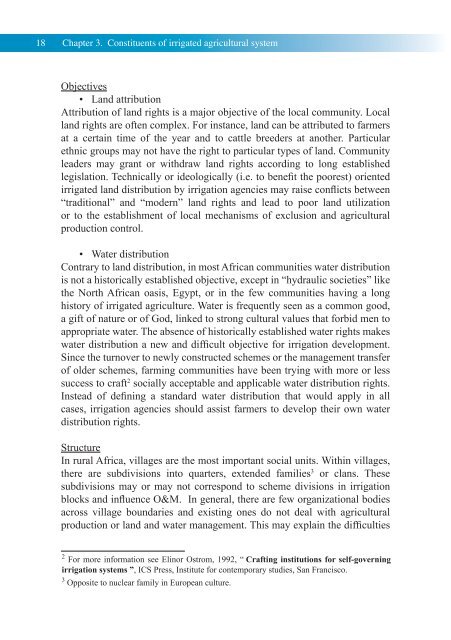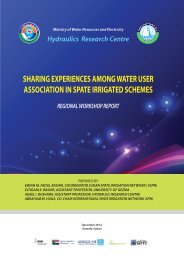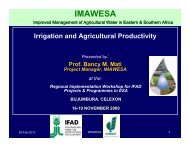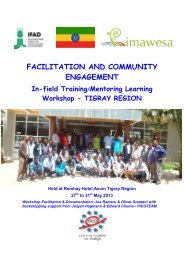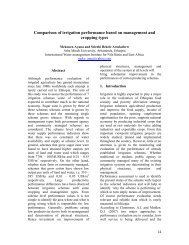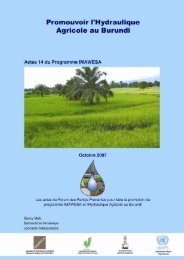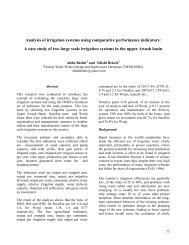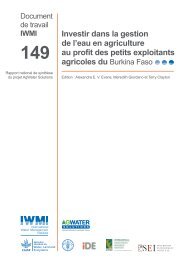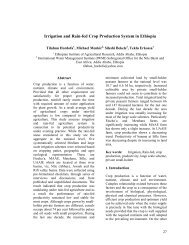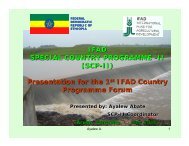Manual - Participatory rapid diagnosis and action ... - FAO.org
Manual - Participatory rapid diagnosis and action ... - FAO.org
Manual - Participatory rapid diagnosis and action ... - FAO.org
Create successful ePaper yourself
Turn your PDF publications into a flip-book with our unique Google optimized e-Paper software.
18 Chapter 3. Constituents of irrigated agricultural systemObjectives• L<strong>and</strong> attributionAttribution of l<strong>and</strong> rights is a major objective of the local community. Locall<strong>and</strong> rights are often complex. For instance, l<strong>and</strong> can be attributed to farmersat a certain time of the year <strong>and</strong> to cattle breeders at another. Particularethnic groups may not have the right to particular types of l<strong>and</strong>. Communityleaders may grant or withdraw l<strong>and</strong> rights according to long establishedlegislation. Technically or ideologically (i.e. to benefit the poorest) orientedirrigated l<strong>and</strong> distribution by irrigation agencies may raise conflicts between“traditional” <strong>and</strong> “modern” l<strong>and</strong> rights <strong>and</strong> lead to poor l<strong>and</strong> utilizationor to the establishment of local mechanisms of exclusion <strong>and</strong> agriculturalproduction control.• Water distributionContrary to l<strong>and</strong> distribution, in most African communities water distributionis not a historically established objective, except in “hydraulic societies” likethe North African oasis, Egypt, or in the few communities having a longhistory of irrigated agriculture. Water is frequently seen as a common good,a gift of nature or of God, linked to strong cultural values that forbid men toappropriate water. The absence of historically established water rights makeswater distribution a new <strong>and</strong> difficult objective for irrigation development.Since the turnover to newly constructed schemes or the management transferof older schemes, farming communities have been trying with more or lesssuccess to craft 2 socially acceptable <strong>and</strong> applicable water distribution rights.Instead of defining a st<strong>and</strong>ard water distribution that would apply in allcases, irrigation agencies should assist farmers to develop their own waterdistribution rights.StructureIn rural Africa, villages are the most important social units. Within villages,there are subdivisions into quarters, extended families 3 or clans. Thesesubdivisions may or may not correspond to scheme divisions in irrigationblocks <strong>and</strong> influence O&M. In general, there are few <strong>org</strong>anizational bodiesacross village boundaries <strong>and</strong> existing ones do not deal with agriculturalproduction or l<strong>and</strong> <strong>and</strong> water management. This may explain the difficulties2 For more information see Elinor Ostrom, 1992, “ Crafting institutions for self-governingirrigation systems ”, ICS Press, Institute for contemporary studies, San Francisco.3 Opposite to nuclear family in European culture.


